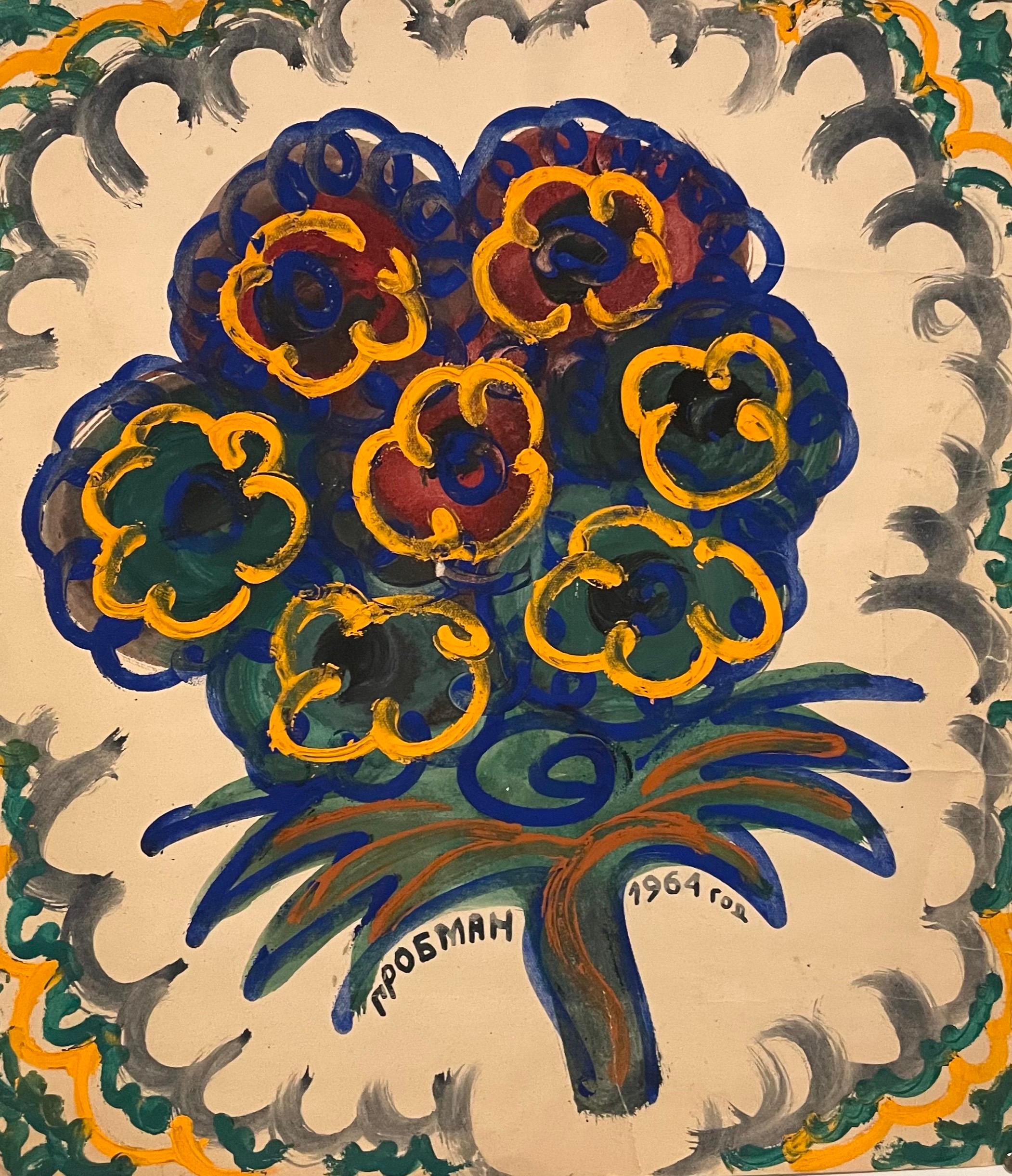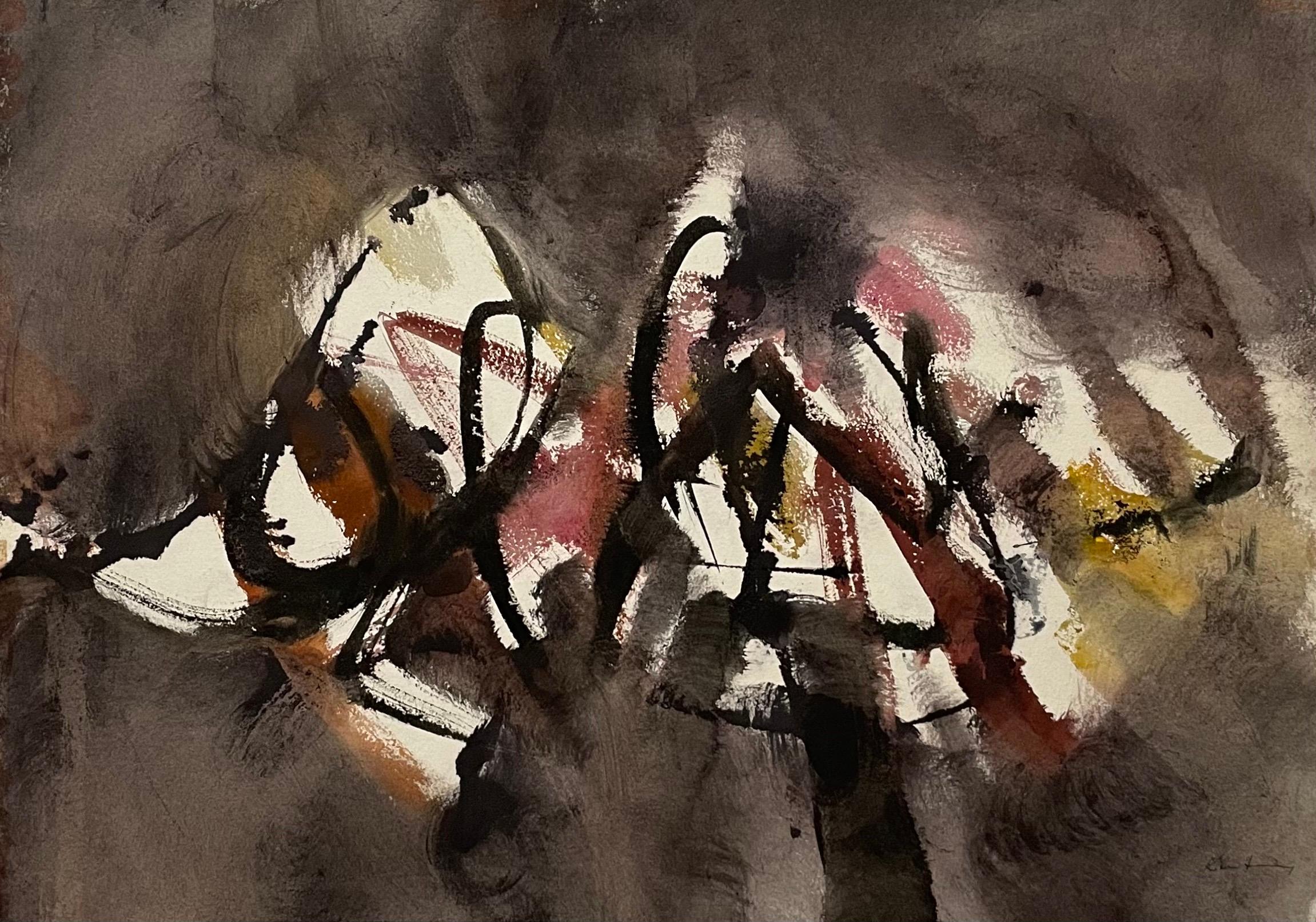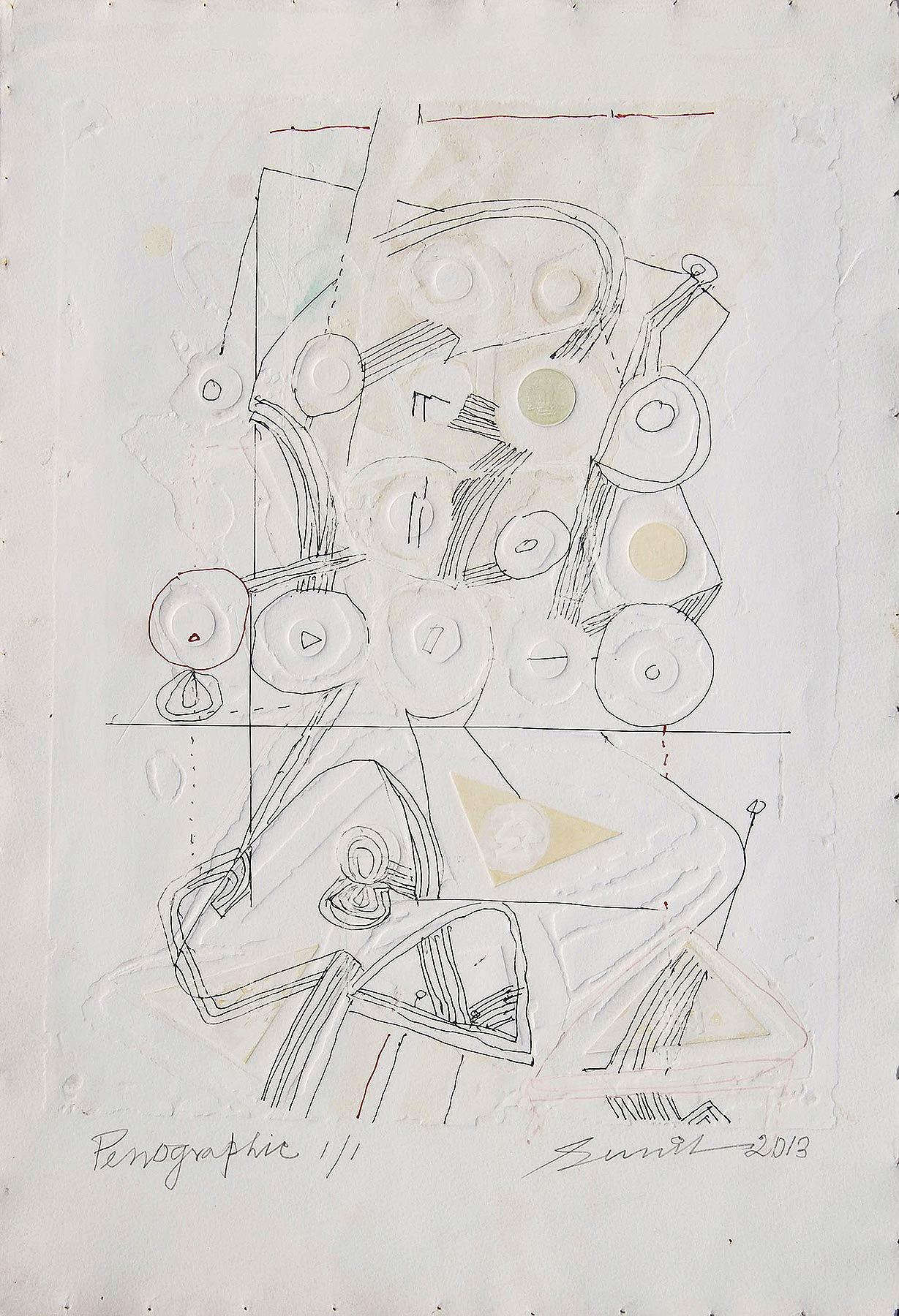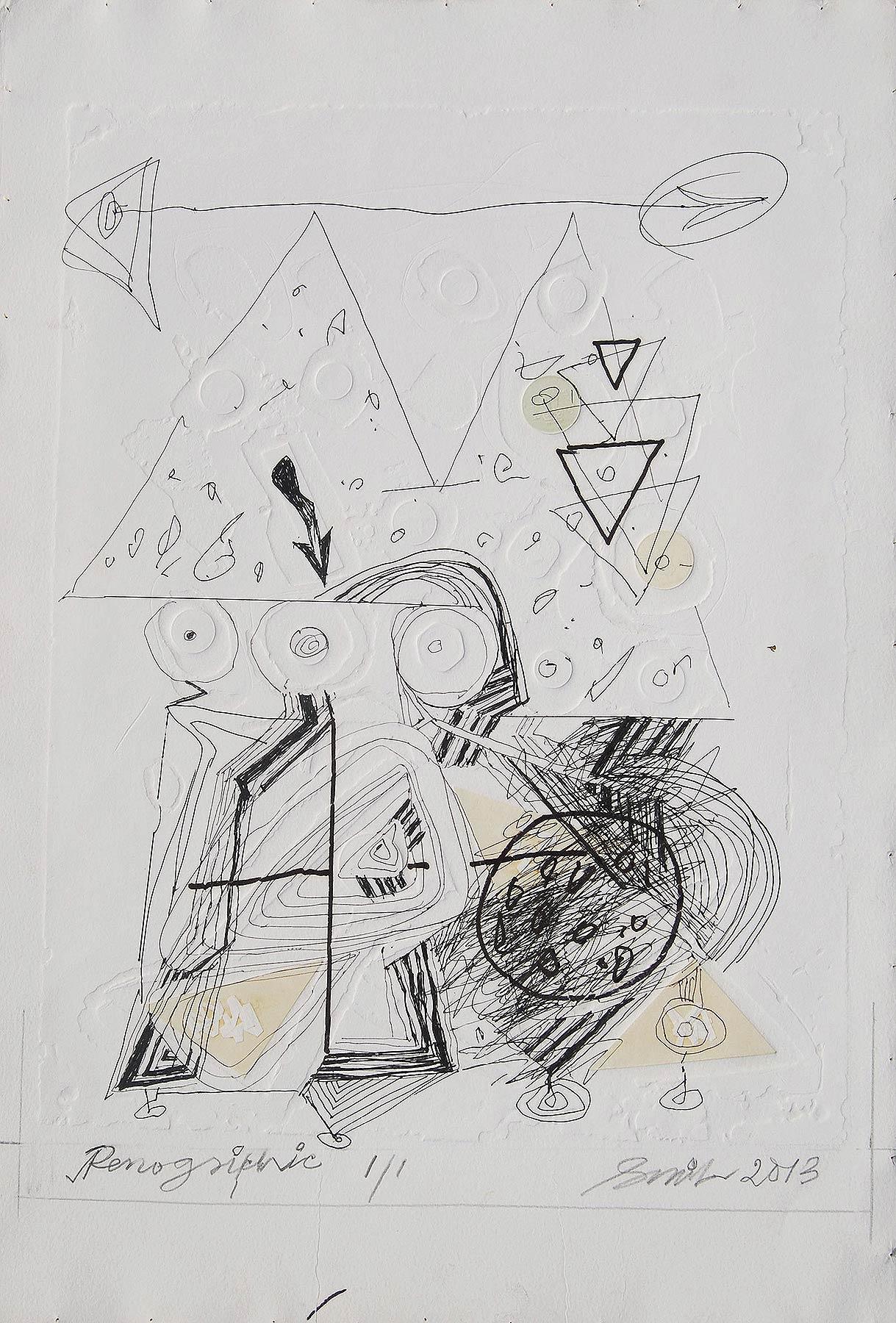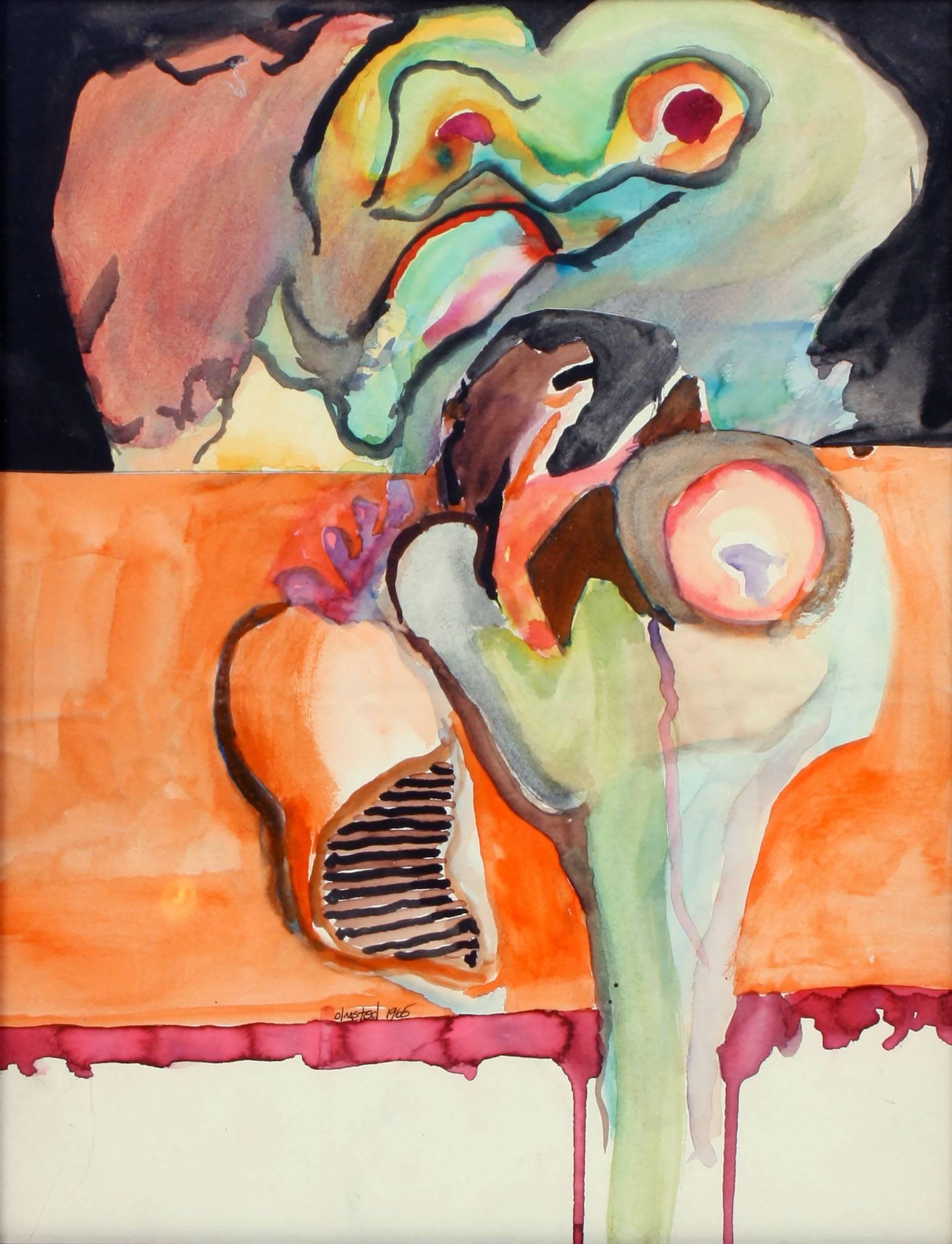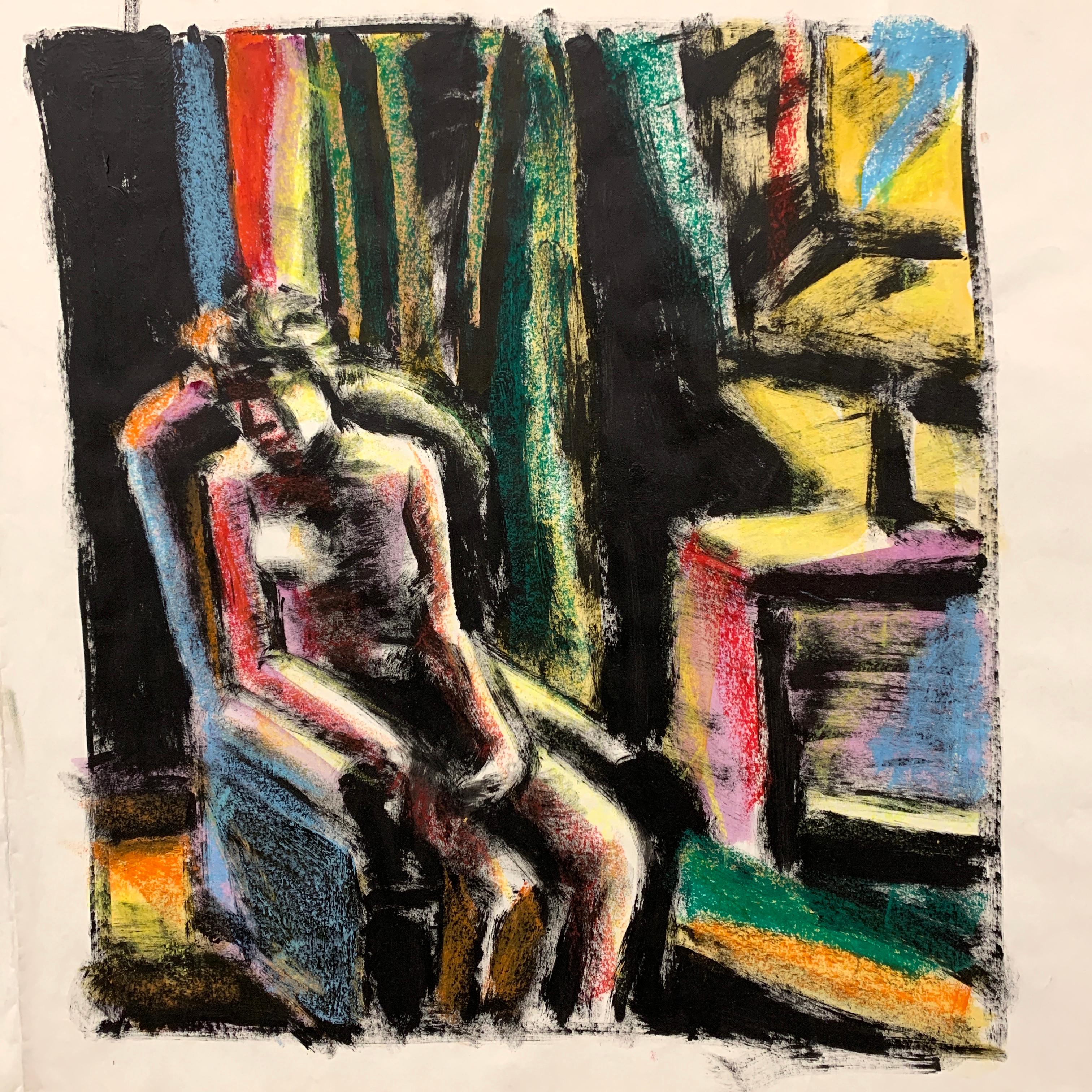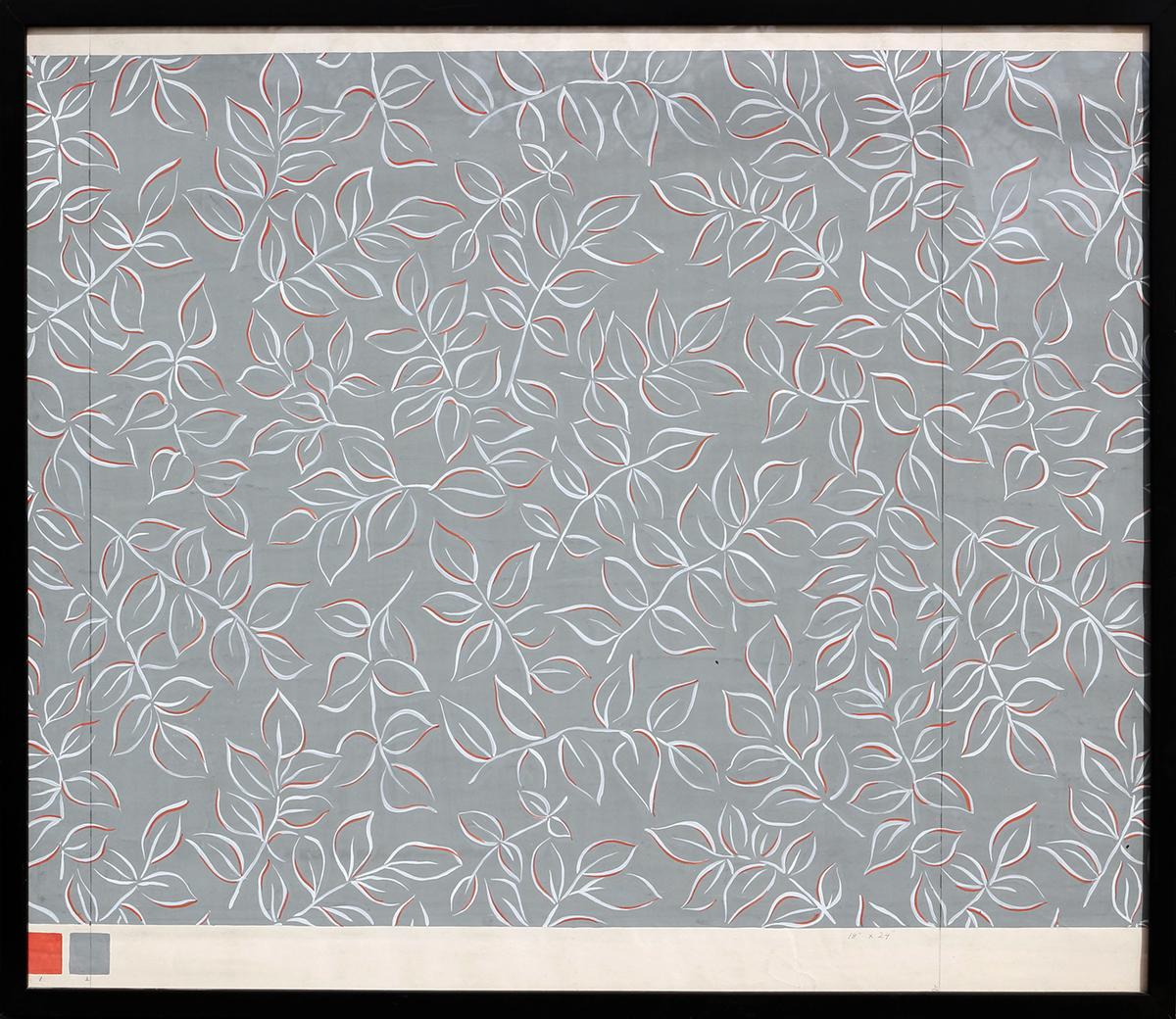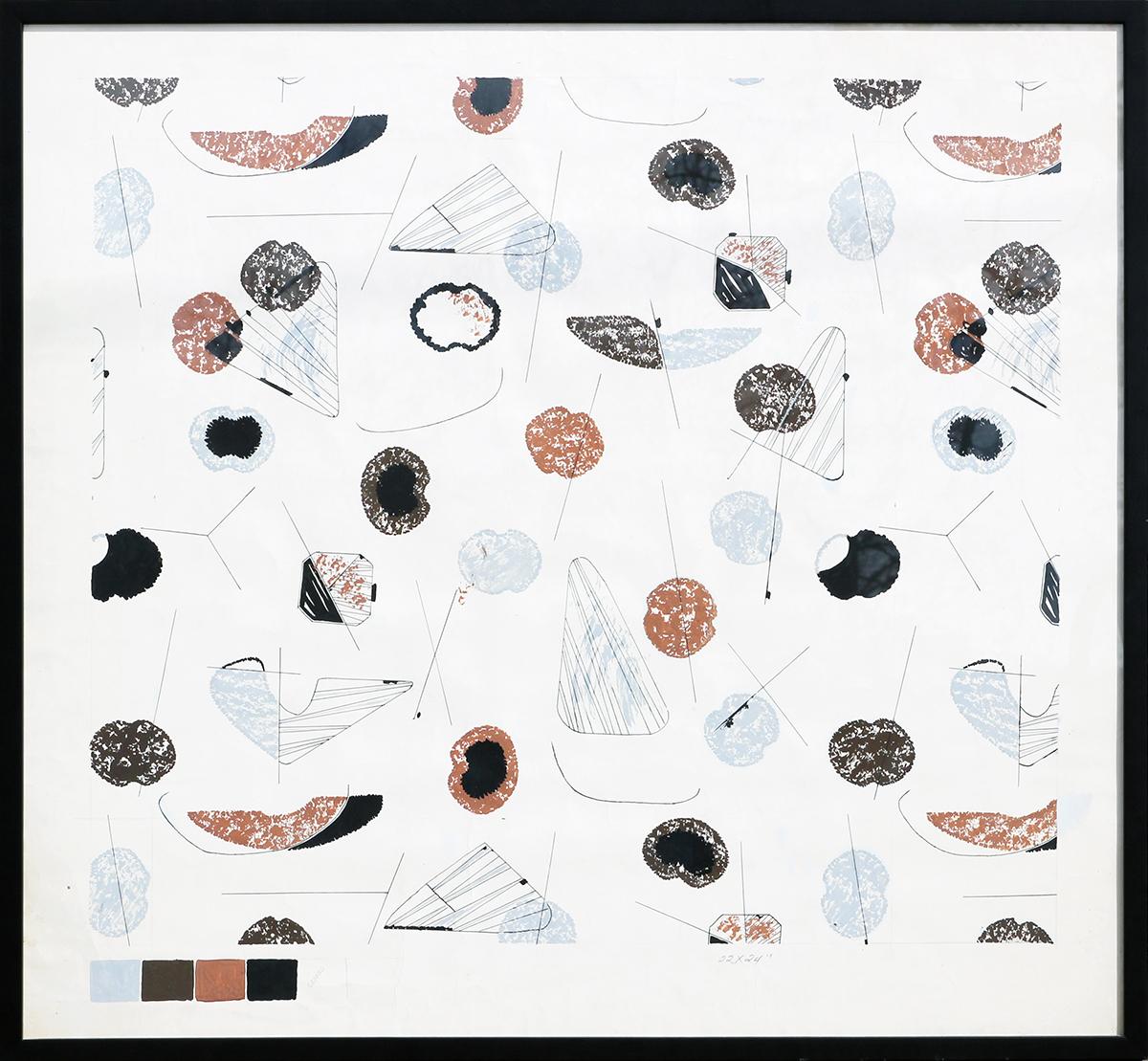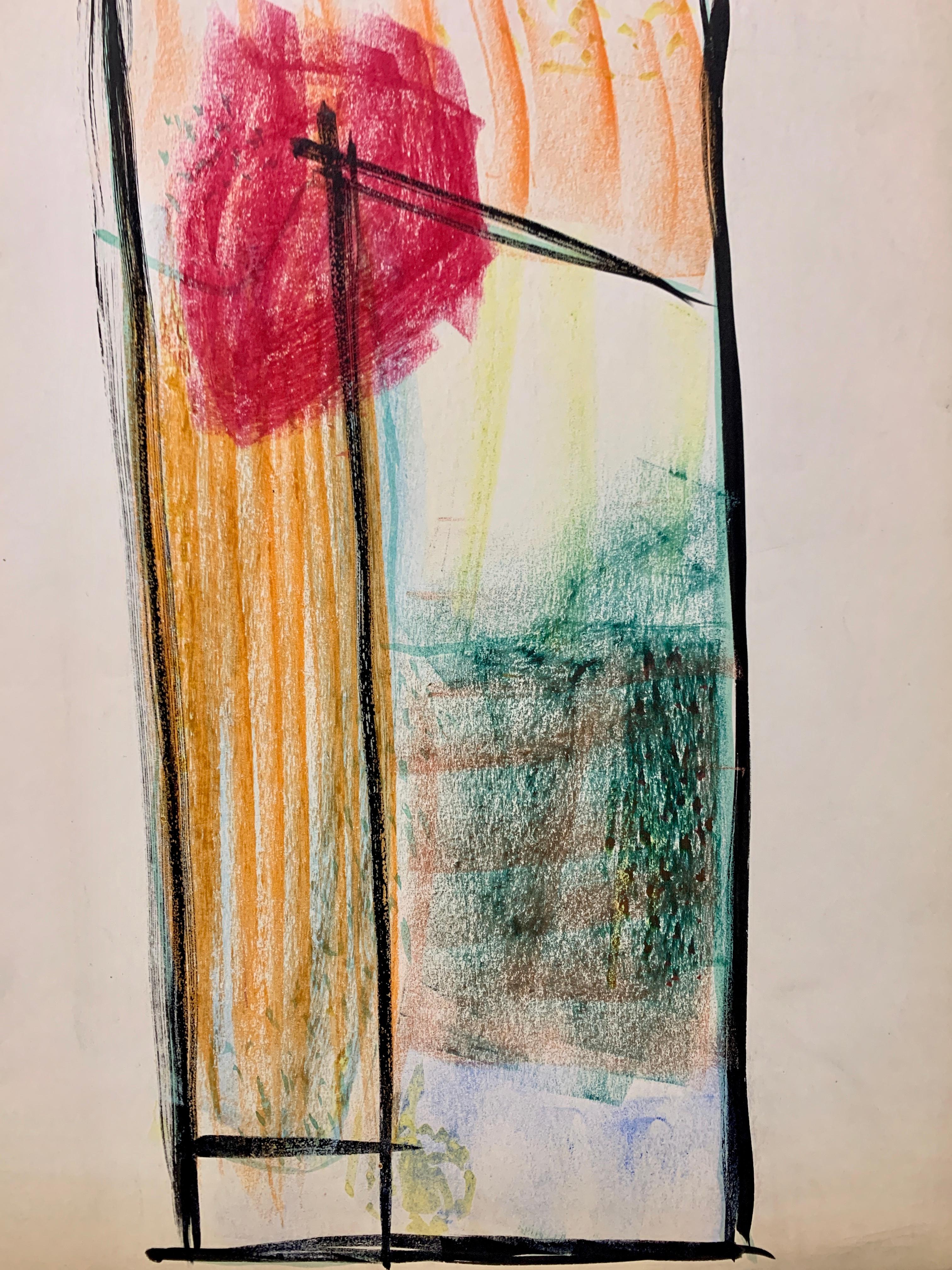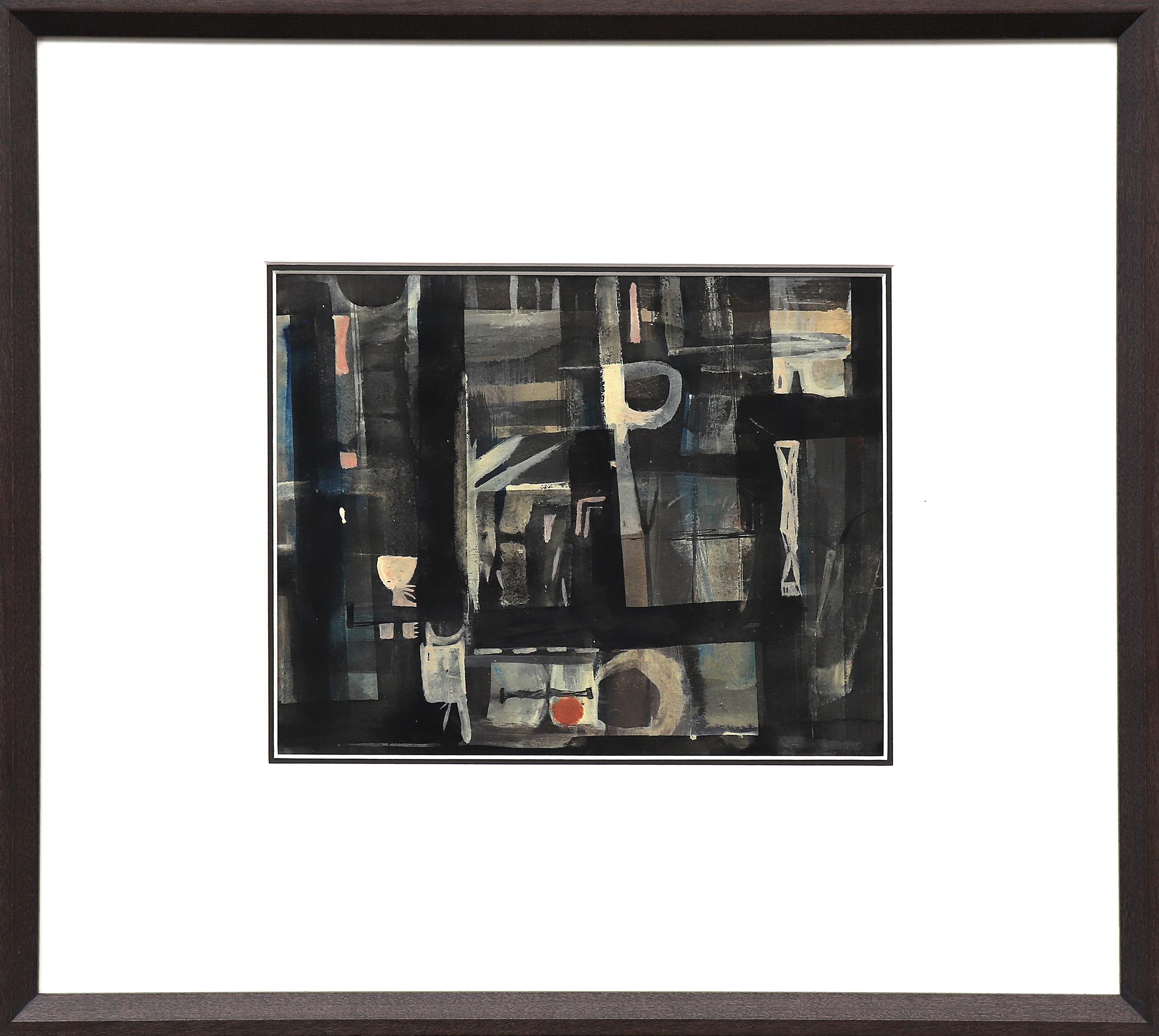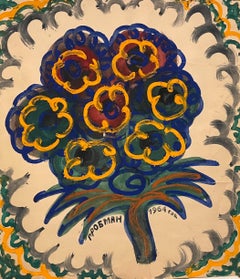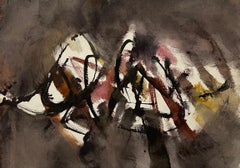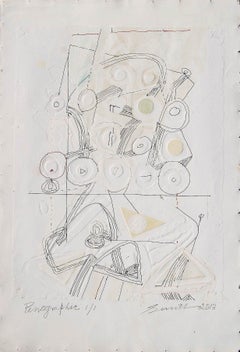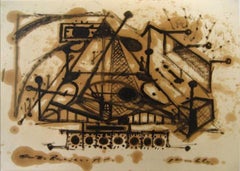
Geometric Deconstruction 1960s Oil on Paper
View Similar Items
1 of 2
Santos Rene IrizarryGeometric Deconstruction 1960s Oil on Paper1960s
1960s
About the Item
- Creator:
- Creation Year:1960s
- Dimensions:Height: 20 in (50.8 cm)Width: 28 in (71.12 cm)
- Medium:
- Movement & Style:
- Period:
- Condition:Minor wear.
- Gallery Location:San Francisco, CA
- Reference Number:Seller: 149651stDibs: LU29827469412
You May Also Like
- Post Soviet Nonconformist Avant Garde Russian Israeli Gouache Painting GrobmanBy Michail GrobmanLocated in Surfside, FLMIchail Grobman Gouache and watercolor on paper Hand signed Lower Left and Dated 1964. Described inn Cyrillic Russian verso. Dimensions: L:13.25" W: 11.75". Michail Grobman (Russian: Михаил Гробман, Hebrew: מיכאיל גרובמן, born 1939) is an artist and a poet working in Israel and Russia. He is father to Hollywood producer Lati Grobman and Israeli architect Yasha Jacob Grobman. Biography 1939 – Born in Moscow. 1960s – Active member of The Second Russian Avant-Garde movement in the Soviet Union. 1967 – Member of Moscow Artists Union. 1971 – Emigrates to Israel and settles in Jerusalem. 1975 – Founded the Leviathan group and art periodical (in Russian). Since 1983, he lives and works mainly in Tel Aviv. Awards In 2001, Grobman was a co-recipient of the Dizengoff Prize for Painting. Solo exhibitions 2007 – Last Skies, Loushy & Peter Art & Projects, Tel Aviv (cat. text: Marc Scheps) 2006 – Creation From Chaos to Cosmos, Bar-David Museum of Fine Art and Judaica, Kibbutz Baram (cat. text: Sorin Heller) 2002 – The Last Sky, installation, Tsveta Zuzoritch pavilion, Belgrad (cat. text: Irina Subotitch) 1999 – Mikhail Grobman: Works 1960–1998, The State Russian Museum, St. Petersburg (cat. texts: Evgeniya Petrova, Marc Scheps, Lola Kantor-Kazovsky, Michail German) Michail Grobman was born in Moscow. He grew up writing poetry, essays and literary prose. In the 1960s, he was active in the Second Russian Avant-garde movement in the Soviet Union. In 1971, he immigrated to Israel. In 1975, he established the Leviathan school together with Avraham Ofek and Shmuel Ackerman, seeking to combine symbolism, metaphysics and Judaism in an all-inclusive “national style.” Grobman’s lithograph work employs images and symbols from Jewish mysticism and Kabbalah. His paintings incorporate texts in Russian and Hebrew. In addition to his artistic endeavors, he writes about art and aesthetics. The group combined conceptual art and "land art" with Jewish symbolism. Of the three of them Avraham Ofek had the deepest interest in sculpture and its relationship to religious symbolism and images. In one series of his works Ofek used mirrors to project Hebrew letters, words with religious or cabbalistic significance, and other images onto soil or man-made structures. In his work "Letters of Light" (1979), for example, the letters were projected onto people and fabrics and the soil of the Judean Desert. In another work Ofek screened the words "America", "Africa", and "Green card" on the walls of the Tel Hai courtyard during a symposium on sculpture Part of the generation of emigre Russian artists, many Jewish, that included Yuri Kuper, Komar and Melamid, Eduard Steinberg, Erik Bulatov, Viktor Pivovarov, Vladimir Yankilevsky, Ilya Kabakov and Grisha Bruskin. Date of Birth: 1939, Moscow 1960s Active member of The Second Russian Avant Garde 1967 Member of the Moscow Painters Association 1971 Immigrated to Israel and settled in Jerusalem 1975 Founded the Leviathan group and art periodical (in Russian) Since 1983 Lives and works in Tel Aviv . Selected Solo Exhibitions: 2002 Pavilion Zveta Zuzovich, "The Last Sky", Belgrad (cat: Irena Subotitch) 1999 The State Russian Museum, ST. Petersburg 1998 "Picture = Symbol + Concept", Herzliya Museum of Art, Herzliya 1995 "Password and Image", University Gallery, Haifa University 1990 Tova Osman Gallery, Tel Aviv 1989 "The Beautiful Sixties in Moscow", The Genia Schreiber University Art Gallery, Tel Aviv University (with llya Kabakov; cat. text: Mordechai Omer] Spertus Museum, Chicago Beit Rami and Uri Nechushtan, Ashdot Yaacov (leaflet) 1972 Nora Gallery, Jerusalem 1973 - Negev Museum, Beer Sheva 1971 Tel Aviv Museum of Art (cat. text: Haim Gamzu) 1966 Mos-lng-Projekt, Moscow 1965 Artist's House, Moscow Energy Institute, Moscow History Institute, Moscow Usti-nad-Orlicy Theatre,Czechoslovakia (leaflet text: Dushan Konetchni) 1959 Mukhina Art Institute, Leningrad . Selected Group Exhibitions: 2003 "Yes do yourself...", Regeneration of Judaism in Israeli art, Zman Omanut Tel Aviv (cat: Gideon Ofrat) 1999 "Russian post-war avantgarde", The Trajsman Collection in the State Russian Museum, St. Petersburg Tretjakov National Gallery, Moscow (cat. text: Yevgenij Barabanov, John Bolt...Category
1960s Modern Abstract Paintings
MaterialsPaper, Watercolor, Gouache
- Modernist Abstract Expressionist Watercolor Painting Bauhaus Weimar ArtistBy Pawel KontnyLocated in Surfside, FLAbstract watercolor composition bearing the influence of the earlier color-block compositions of Paul Klee. Pawel August Kontny, (Polish-German-American artist) He was born in Laurahuette, Poland, in 1923, the son of a wealthy pastry shop owner. In 1939 he began studying architecture in Breslau where he was introduced to the European masters and to the work of some of the German Expressionists, soon afterward banned as "degenerate artists" and removed from museums throughout Germany by the Nazi regime. His studies were interrupted by World War II. Drafted into the German army, traveling in many countries as a soldier, he sketched various landscapes but in 1945, he was captured and held as a prisoner of war in Italy. After the war, he studied at the Union of Nuremberg Architects to help design buildings to replace ones destroyed in the war. He recorded his impressions of the local population and the landscapes through his watercolors and drawings. Pawel Kontny thereafter moved to Nuremberg, Germany, becoming a member of the Union of Nuremberg Architects and helping to rebuild the city's historic center. He soon decided to concentrate on his professional art career. He married Irmgard Laurer, a dancer with the Nuremberg Opera. Pavel Kontny 's career as an artist was launched with his participation in an all German exhibition, held at the Dusseldorf Museum in 1952. He held one-man shows in Germany, Switzerland and the United States. During his trip to the United States in 1960, Kontny became instantly enamored with Colorado, and decided to relocate to Cherry Hills with his wife and two children. He quickly established himself in the local art community, being affiliated for a time with Denver Art Galleries and Saks Galleries. His subject matter became the Southwest. During this time he received the Prestigious Gold Medal of the Art Academy of Rome. His extensive travel provided material for the paintings he did using his hallmark marble dust technique. he also worked equally in pastel, watercolor, charcoal and pencil-and-ink. in a style which merged abstraction and realist styles, influenced by Abstract Expressionist painting and South Western American landscapes. In the early 1960s he was one of only a few European-born professional artists in the state, a select group that included Herbert Bayer (1900-1985), a member of the prewar Bauhaus in Weimar and Dessau, Germany, and Roland Detre (1903-2001), a Hungarian modernist painter. As a Denver, Colorado resident, Pavel Kontny exhibited at galleries and museums throughout the United States, Germany and Japan. There, he was inspired by frequent trips to Native American pueblos in the Southwest, as well as by the study of the Plains Indians of Montana and Wyoming. Over the years Kontny had a number of students and generously helped young artist by hosting exhibitions at his Cherry Hills home. For many years he generously donated his paintings to support charitable causes in Denver. Influences during his European years included German pastelist C.O. Muller, German Informel painter Karl Dahmen and Swiss artist, Hans Erni. In the early 1950s his painting style showed the influence of the Die Brücke (The Bridge), a group of German expressionist artists formed in Dresden in 1905 who had a major impact on the evolution of modern art in the twentieth century in Germany. By the middle of the decade his style incorporated more referential abstraction and total abstraction, resulting in part from his study of Hans Hartung, a German artist based in Paris who exhibited his gestural abstract work in Germany. His work also bears the influence of Sam Francis. The American moon landing in 1969 inspired Paul Kontny...Category
Mid-20th Century American Modern Abstract Drawings and Watercolors
MaterialsWatercolor, Archival Paper
- Penographic II, White, Black Colour Drawing by Indian Artist Sunil Das "In StockBy Sunil DasLocated in Kolkata, West BengalSunil Das - Penographic II - 17 x 13 inches (unframed size) Penographic Series. Single Edition 1 / 1 (each). ( Unframed & Delivered ) Sunil Das (1939-2015) was a Master Modern India...Category
2010s Modern Abstract Paintings
MaterialsArchival Ink, Watercolor, Paper
- Penographic III, White, Black Colour Drawing by Indian Artist "In Stock"By Sunil DasLocated in Kolkata, West BengalSunil Das - Penographic III - 17 x 13 inches (unframed size) Penographic Series. Single Edition 1 / 1 (each). ( Unframed & Delivered ) Sunil Das (1939-2015) was a Master Modern Indi...Category
2010s Modern Abstract Paintings
MaterialsArchival Ink, Mixed Media, Watercolor, Archival Paper
- Abstract LandscapeBy Wes OlmstedLocated in Buffalo, NYAn original watercolor painting by American artist Wes Olmsted depicting an abstract landscape view.Category
1960s American Modern Abstract Paintings
MaterialsArchival Paper, Watercolor
- 1967 "Abstract 4 Pink, Blue and Yellow" Mid Century Watercolor AbstractBy Michael KniginLocated in Arp, TXMichael Knigin Abstract 4 Pink, Blue and Yellow 1967 Ink brush and watercolor on paper 8.25"x11" unframed $675 Signed and dated in ink lower right Came from artist's estate *Custom f...Category
Mid-20th Century Modern Abstract Paintings
MaterialsPaper, Ink, Watercolor
